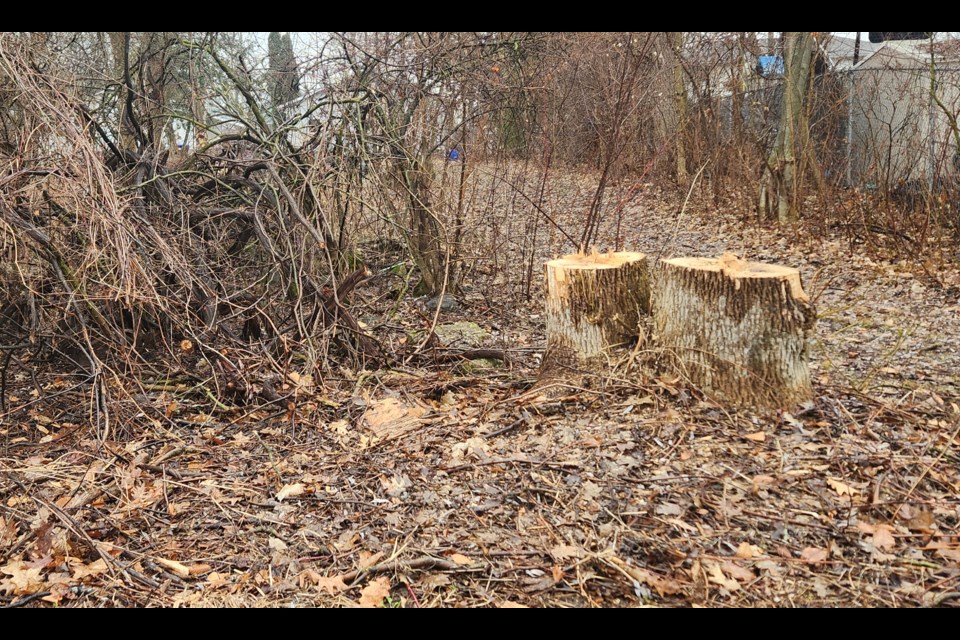If you’ve seen cut trees around the parks of Midland, it’s a protective measure against the spread of infestation for local foliage.
Town operations supervisor Dan Murnaghan told MidlandToday that select ash trees removed in the Little Lake Park and Tiffin Park areas were infected with the invasive emerald ash borer beetle.
“Many ash trees are currently infected and unfortunately all infected ash trees will end up being removed,” said Murnaghan.
According to Natural Resources Canada, the mortality of ash trees is due to the placement of emerald ash borer larvae between the bark and sapwood of the tree where the nutrients and water transportation system is destroyed.
Fortunately for local trees, Midland has experienced protectorates who are vigilant against the threat.
“The town of Midland has two ISA (International Society of Arboriculture) certified arborists on staff,” said Murnaghan, “and the town also employs a consulting certified arborist who monitors individual tree health, overall canopy health and performs inspections. Any tree that has infection from disease or insect is monitored every year.”
Residents can also keep on top of emerald ash borer infection by spotting symptoms of infestations. Woodpecker feeding holes, D-shaped exit holes, bark deformities, yellowing foliage and crown dieback (upper branch dying) are signs of possible infestation.
Murnaghan advised concerned residents to contact the town through customer service by phone, email, or by submitting an inquiry through the town portal. Further information on the trees in Midland, including contact information, can be located on the town website.
“The Town’s arborist reviews tree inquiries and if requested will contact the resident to follow up,” said Murnaghan.
As for the trees cut down in the parks, Murnaghan said that it would be at town staff’s discretion when and where the best replacements would be chosen.
“Tree planting is performed by in-house staff when time permits,” Murnaghan noted. “Staff do try to establish new plantings in areas where trees have been removed and if the site is suitable.”
The emerald ash borer is an Asian species native to China, Japan, Taiwan, Korea, Mongolia and the Russian Far East.
In 2002, the beetle was detected for the first time in North America in the vicinity of Detroit, Michigan, and later in Windsor, Ontario. Data from tree ring analysis indicated that the beetle had probably been present in those areas since the early 1990s.
In Canada, emerald ash borer has been detected throughout southwestern Ontario, in Ottawa and nearby counties in eastern Ontario, and in Sault Ste. Marie and on Manitoulin Island in northern Ontario. In Quebec, the beetle has been found in the vicinity of Gatineau and Montreal. The pest has also been confirmed in 21 states in the United States.



